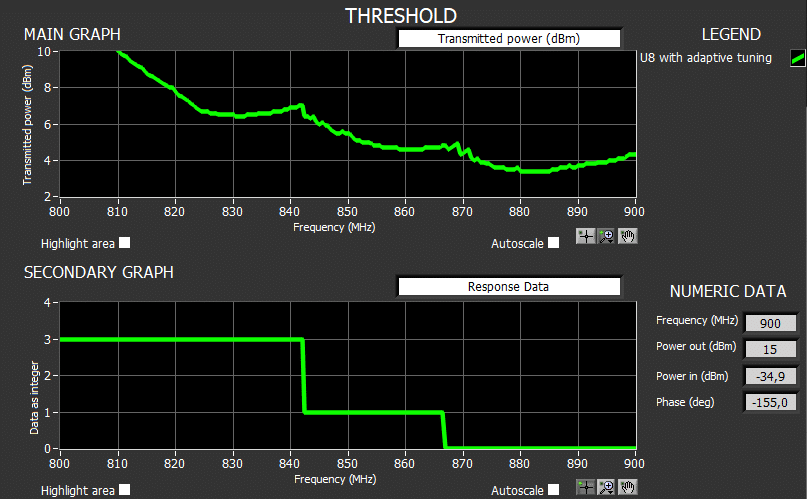Impedance Matching
Matching the transponder antenna well to the chip impedance has always been the cornerstone of a well-performing UHF tag. For antenna designers, it is lightly frustrating that each chip brand and model seemed to have their unique impedances, therefore various versions of the same antenna are needed for different chips models.
On the other hand, from the chip designers’ point of view, it must have been frustrating that the tag antenna is never comfortably operating in free space, but always attached to various materials needing different tuning to operate optimally again.
For a long time, it has been known that impedance tuning does not need to be a permanent compromise, but can be actively re-tuned. This has been the norm in many wireless communications and roughly ten years ago this was introduced to UHF RFID as well. The first company to open the game was RFMicron with their ”Chameleon technology” in the Magnus® family of chips.
The early chips had a 5-bit tuning register, giving 32 different and successive tuning states, wherefrom the chip chose the optimal. Since the register value could be read back, the biggest value proved not to be the improved tuning, but the information of how much was tuned. This was turned into a clever way of performing RFID sensoring and later chip versions had an improved resolution of a 9-bit tuning register.
Today, several mainstream RFID chip providers utilize self-adapting front-ends for the small performance gain it provides. Most notable companies utilizing this are Impinj and NXP. Here we are going to see how this alters the tag performance and how to gain visibility into this.
Visibility Into Tuning
First, let’s take a look into the Monza® R6B chip. Examining the memory map in the datasheet, it clearly tells that there are three bits in the reserved memory where you can read the current suggested tuning state. In addition, there is a single bit, by which adaptive tuning can be disabled.

So, to set the feature on or off in Tagformance® for testing, the simplest way is to perform any write test with the correct write parameters. Reserved memory, Word pointer 4, and write the last bit high/low to deactivate/activate the tuning. The current state can be verified by reading the same memory.

Below is a threshold of the tag both with the tuning activated and disabled. With the adaptive tuning activated, the area of optimal performance is seen to increase by +/- 10MHz for this particular inlay design. To monitor the used tuning state, do the sweep with the READ command and the correct read settings for the chip. This gives the ability to select “response data” from the drop-down menu to see what data the chip responded with to the READ. In this case, you can see the tuning goes from 4 to 0 in the ~20MHz stretch from 880MHz to 900MHz.

How About the UCODE®?
The UCODE® 8 family from NXP works in quite a similar manner. The tuning state can be read back from the memory by pointing to the correct location as stated in the datasheet. The deactivation of the feature needs more involvement. It seems a non-zero access password needs to be set for the tag, and then the setting bit needs to be “toggled” in the secured state using the proper WRITE command as the BLOCKWRITE will not do it. As the UCODE® has fewer tuning steps, you can sometimes spot from the tuning curve the points where the impedance was changed. It’s as if the curve consists of a few cut-n-pasted curves. Well, because it kind of is.

Conclusion
Automatically adaptive tag ICs are here to stay. It might be that the advantage they provide is a little slim at the moment, but if there is a performance gain to be had, why not take it? For the antenna designer and tag producer, it is valuable to be able to also switch the tuning off when needed, to easier judge the antenna itself, perhaps against a simulation.
Alternatively monitoring the read response data “stepping diagram” is a simple tool to see if the design is functioning as it should. Eager to chat more about tag design with us? Feel free to contact our RFID experts HERE.
All blog posts